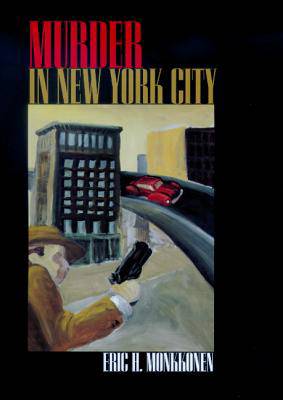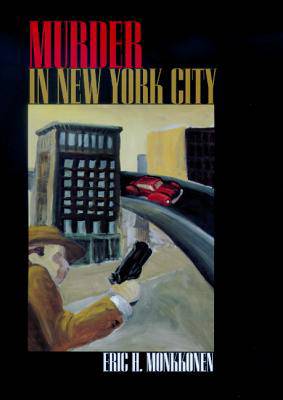
- Afhalen na 1 uur in een winkel met voorraad
- Gratis thuislevering in België vanaf € 30
- Ruim aanbod met 7 miljoen producten
- Afhalen na 1 uur in een winkel met voorraad
- Gratis thuislevering in België vanaf € 30
- Ruim aanbod met 7 miljoen producten
Zoeken
Omschrijving
Murder in New York City dramatically expands what we know about urban homicide, and challenges some of the things we think we know. Eric Monkkonen's unprecedented investigation covers two centuries of murder in America's biggest city, combining newly assembled statistical evidence with many other documentary sources to tease out the story behind the figures.
As we generally believe, the last part of the twentieth century was unusually violent, but there have been other high-violence eras as well: the late 1920s and the mid-nineteenth century, the latter because the absence of high-quality weapons and ammunition makes that era's stabbings and beatings seem almost more vicious. Monkkonen's long view allows us to look back to a time when guns were rarer, when poverty was more widespread, and when racial discrimination was more intense, and to ask what difference these things made. With many vivid case studies for illustration, he examines the crucial factors in killing through the years: the weapons of choice, the sex and age of offenders and victims, the circumstances and settings in which homicide tends to occur, and the race and ethnicity of murderers and their victims.
In a final chapter, Monkkonen looks to the international context and shows that New York-and, by extension, the United States-has had consistently higher violence levels than London and Liverpool. No single factor, he says, shapes this excessive violence, but exploring the variables of age, ethnicity, weapons, and demography over the long term can lead to hope of changing old patterns.
As we generally believe, the last part of the twentieth century was unusually violent, but there have been other high-violence eras as well: the late 1920s and the mid-nineteenth century, the latter because the absence of high-quality weapons and ammunition makes that era's stabbings and beatings seem almost more vicious. Monkkonen's long view allows us to look back to a time when guns were rarer, when poverty was more widespread, and when racial discrimination was more intense, and to ask what difference these things made. With many vivid case studies for illustration, he examines the crucial factors in killing through the years: the weapons of choice, the sex and age of offenders and victims, the circumstances and settings in which homicide tends to occur, and the race and ethnicity of murderers and their victims.
In a final chapter, Monkkonen looks to the international context and shows that New York-and, by extension, the United States-has had consistently higher violence levels than London and Liverpool. No single factor, he says, shapes this excessive violence, but exploring the variables of age, ethnicity, weapons, and demography over the long term can lead to hope of changing old patterns.
Specificaties
Betrokkenen
- Auteur(s):
- Uitgeverij:
Inhoud
- Aantal bladzijden:
- 250
- Taal:
- Engels
Eigenschappen
- Productcode (EAN):
- 9780520221888
- Verschijningsdatum:
- 4/01/2001
- Uitvoering:
- Hardcover
- Formaat:
- Genaaid
- Afmetingen:
- 160 mm x 236 mm
- Gewicht:
- 576 g

Alleen bij Standaard Boekhandel
+ 142 punten op je klantenkaart van Standaard Boekhandel
Beoordelingen
We publiceren alleen reviews die voldoen aan de voorwaarden voor reviews. Bekijk onze voorwaarden voor reviews.











